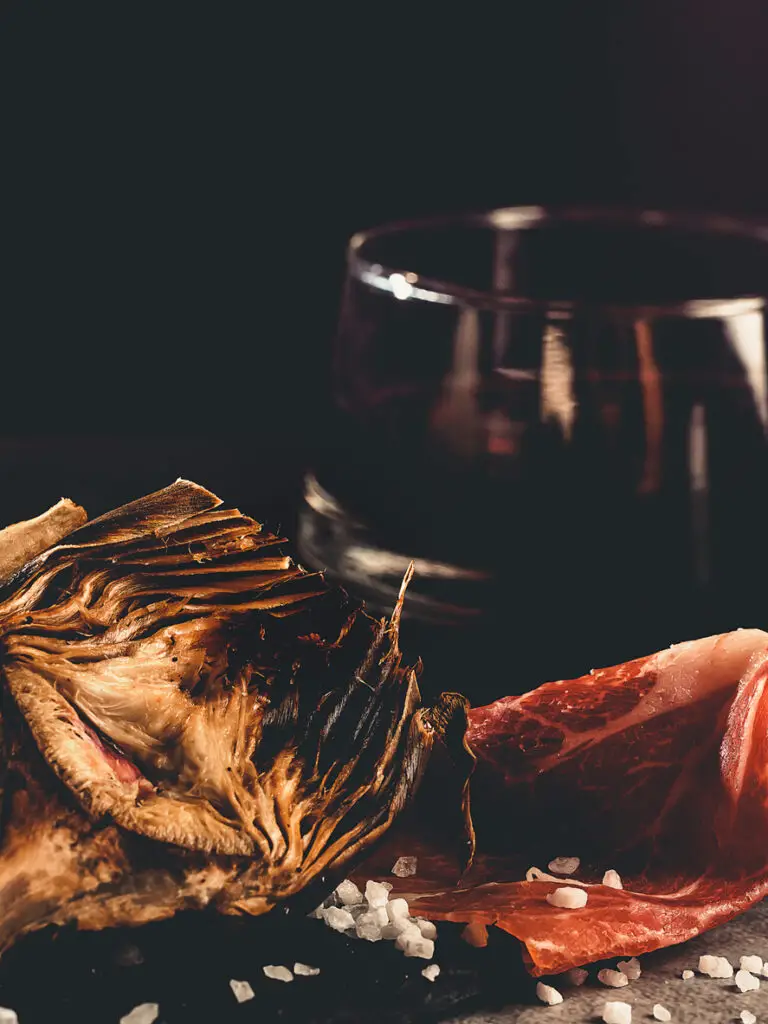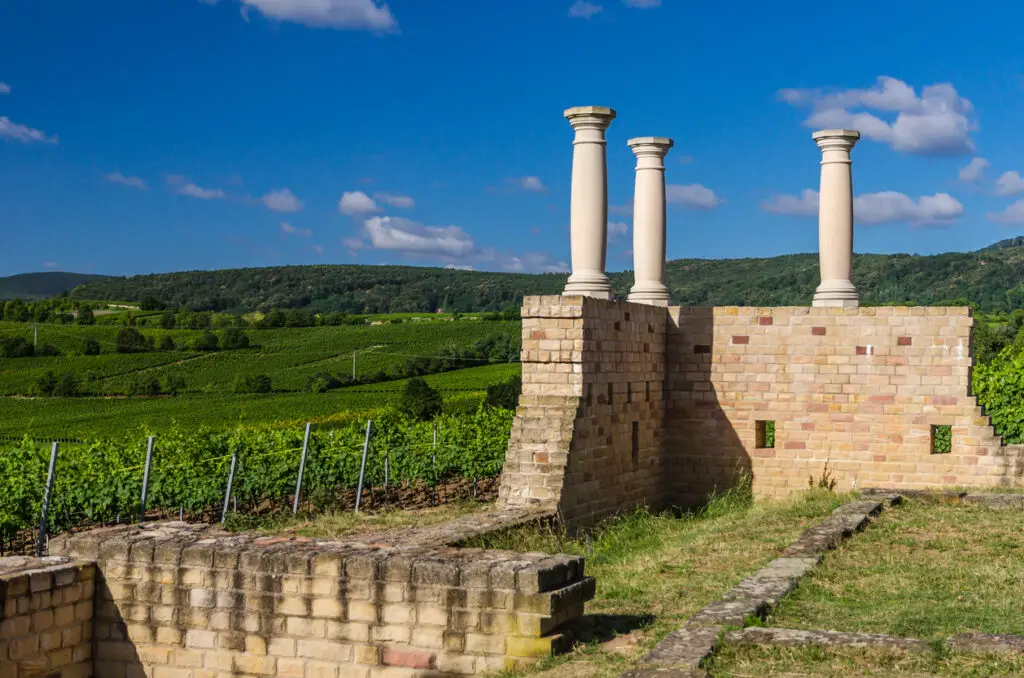It is interesting how wine is one of those rare drinks in the world that is still popular nowadays. It is even older than the Roman empire. So we will dig into history today to see who brought wine to Rome and what wine did the Romans drink?
Romans drank both red and white wine. To prevent their wine from going bad, they fermented their grapes longer which produced a higher alcohol wine than normal. They then had to mix it with water to be able to drink it.
This topic can be discussed for hundreds of pages. We will try to keep it short and sweet, with only the most interesting details. Let’s get started.
Roman Drinks
As the Roman soldier was expected to march for miles and miles on a daily basis, proper hydration was undoubtedly a significant need. So what wine did the Romans drink or did they also drink other types of alcohol?
In Ancient Rome, there were many drinks available: posca, beer, mead, and hydromel, including hot and cold alcoholic variations, and wine.
To cut it short, members of the lower-class (including soldiers) drank the rest of the drinks, and the upper-class drank wine, as they believed it was a divine drink.
Roman Legends About Wine

Let’s start with Bacchus.
The roman god of wine was Bacchus. Romans adopted the idea of having a god for wine from ancient greeks. The latter named their god Dionysus. Yet the “favorite” god of wine of all time is Bacchus, and he is Roman.
Author Note: Roman mythology says he was the one who transmitted his knowledge of how to plant vines and how to make wine to humans. The legend tells about Bachus’ trip and how he discovered a small plant growing, pulled it from the ground, and took it home.
Later, he found a bird’s hollow bone and decided to put the plant in it, and somehow the plant grew very fast and exposed its root. Then, after some time, he spotted a bone that belonged to a lion, and Bacchus did the same, and the plant grew again due to the fertility that he transmitted.
Finally, Bacchus found the third bone and again placed the plant there until he returned home. This plant eventually became a vine. And when Bachhos was teaching men the art of viticulture, he used the story of the three bones and explained that if the juice of the main plant is drunk reasonably, they would be happy and sing and enjoy life as birds do.
If they kept drinking more than they should, they would become lions and find trouble. If they drank even more wine, they would become donkeys, committing all sorts of stupidities.
There are many artworks dedicated to Bacchus, statues, and painted works. He is a middle-aged man with a bear and a full head of hair crowned with an intricate headpiece of grapes and vines. In his hand, there is always a glass of wine to emphasize his job as a god.
A Brief History Of Roman Wine
Greek Influence
As the legend of viticulture and wine was inspired by greek, Romans adapted wine drinking traditions too. Greek Dominance during 800–300 BC was significant, as the Romans drank greek wine only.
The wines’ price was high because very few wines came from anywhere else rather than Greece. Rome already started to create its wine, but it was not so popular in that period. This is why Greek wine was the answer to what wine did the Romans drink originally.
As Greeks loved oxidized wine, they mixed honey and herbs with wine, making it taste more like sherries. So did the Romans. This habit made many wines either incredibly sweet or very intense, so they had to be watered down to make them palatable. Nobody drank wine, “neat.”
Wine Monopoly
The Romans quickly took wine production into their hands and started to use the methods which they had learned from the Carthaginians. Very soon, Rome had a monopoly on winemaking, as they had banned wine production in the outer provinces.
This monopoly caused a wine shortage and rising prices. The ban remained unchanged for another hundred years. In Gaul, the wine prices reached gigantic dimensions, and they were so high that you could trade a slave for an amphora (40L) of wine!
Vineyards

Among the ancient Roman Empire’s legacies was the Roman lands’ viticultural basis that would become world-famous wine regions.
As Romans were active in trade, military campaigns, and settlements, they brought a taste for wine and the impulse to plant wine trees.
Roman wine dealers were eager to trade with enemies and collaborators alike, from the Carthaginians and peoples of southern Spain to the Celtic tribes in Gaul and Germanic tribes of the Rhine and Danube.
Author Note: As Romans conquered Gaul and Hispania (essentially France and Spain), in places like Bordeaux, Mainz, Trier, and Colchester, where they established Roman garrisons, vineyards also were planted to supply local needs and limit long-distance trading costs.
The Roman soldiers planted vineyards in their new homelands, where new settlements were founded and populated. They used the knowledge of Roman viticulture that they inherited from their families and life before the military.
There are some disagreements around how Romans imported grapes from Italy and Greece to the new lands. Therefore there is sufficient testimony that they cultivated the native vines, which are believed to be the grapes folks grew in those provinces.
The Wine Making Process in Ancient Rome
The agricultural way of taking care of the vines was pretty much the same as now. They paid attention to the climate and the soil for the certain grape varieties as we do nowadays. Then clipped the vines and cut out the extra bunches, selected the best packs manually, etc.
But the process of making the wine was completely different. They squeeze the juice out of the grapes by crushing them with bare feet and then using stone or screws for presses.
Romans made the fermentation process in anfores, unique clay jars, which were also used to store the wine. Wooden barrels took over amphoras only in the 3rd century A.D.
Types of Wine in Ancient Rome
As the wine has spread quickly all over the empire, ordinary people started to drink wine as well. There were two types of wines in ancient Rome.
Regular Wines
First was the regular, general wines, mostly the rustics, but upper-class people also drank them, no shame in that. Mustum was one of the famous wines, a low-quality grape juice that was mixed with vinegar before drinking.
Mulsum was a better wine that was sweetened with honey and served during public events. Lora was a bitter type of wine and was made of leftovers, like grape skin, hucks, and seeds. Vinum Dulce was the best wine. It was sweet and wholesome. Roman people made this type of wine from dried grapes and during the heat of the day.
Specific Wines
At first, only greek wines were mentioned for special wines and were served for upper-class people. One of them is Vinum Pramnian, a harsh, astringent, and robust wine. Chian is the most praised wine of Greece, and it was delicious. Setium already is a roman wine variety, which is considered the best wine of ancient Rome.
Alban was a preferred wine among the upper class, and it provided several varieties of flavors, including very sweet, sweetish, rough, and sharp. It was also considered perfect if kept for 15 years.
Memartin became popular when Julius Caesar tasted it. After that, he served it at his parties, public events, and triumphs. The origins of this wine were in Sicily.
Wine in Roman Culture

The ancient Greeks sharply influenced early Roman culture. Although the Greeks thought that Romans were “dry”; this view changed throughout the empire. The wine had religious, medicinal, and social roles that set it apart from other Roman cuisines.
Author Note: Like in Greek culture, cupbearers mixed wine with water, and both cultures held banquets, where the hosts used wine to show off wealth and prestige. With the beginning of the golden age of winemaking and the era of expansion, a “democratic” approach to wine emerged.
The wine was a necessity of everyday life rather than merely a luxury enjoyed by the elite. They even gave slaves wine, a weekly ration of five liters. They “justify” their move by saying it was the dietary health of the slaves and the guarantee of their strength and not for their feast.
The unrestricted planting of grapes followed from the need to serve all social classes but was also given stimulus by the changing the Roman diet. Romans began to split-shift from meals consisting of moist porridge and gruel to those more bread-based; wine aided eating the dried food.
Medical Uses
As time goes by, we are starting to appreciate the wisdom of ancient people. Ancient people believed that wine cured mental disorders such as depression, memory loss, and grief. Instead of asking stupid questions, they poured wine.
Wine served as an antiseptic (very relevant, right?) for wounds and an analgesic for surgery.
There are millions of writings about how wine was used as a medicine for everything in ancient Rome. They did their first experiments on the gladiators, but anyway, the testimonials say that not a single gladiator died during wine care.
The Romans even made medicine with wine from grapevines. They treated the wine with a mixture of ashes, manure, and hellebore, and the doctors used the result to fix digestion.
Even the flowers of certain plants, e.g., juniper and myrtle, would be recommended to help with snakebites and gout if they were soaked in wine.
Hail Caesar
They say that Romans had toasts for every occasion when the wine was on the table. Here’s one for your health and happiness, and let the wine never be missing from the table! We hope you enjoyed this article on what wine did the Romans drink.
To living a full-bodied life,
Wesley

